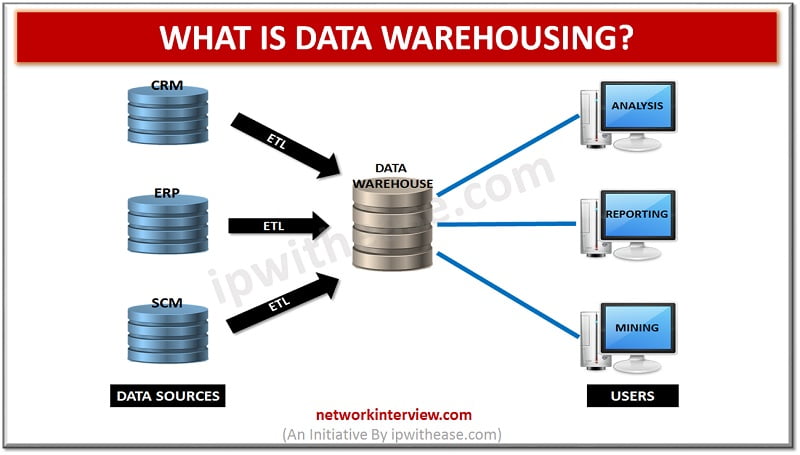
What is Data Warehousing?
The process of data management and collection from different sources is termed as data warehousing for the purpose of offering useful insights of business. Analysis and connection of business data from diverse sources serves as the major purpose of data warehouse. The system developed for data reporting and analysis has data warehouse in its core.
It is the perfect amalgamation of components and technologies that are helpful for using the data in strategic manner. A business stores huge amount of information in electronic form having and its design is intended for analyzing and querying in place of transaction processing. This process is used for data transformation into information such that users are able to access it for creating a difference in timely manner.
Maintenance of data warehouse of decision support takes place separately from the operational database of the organization. Data warehouse is however an environment instead of a product. It serves as information system’s architectural construct by which users are provided with historical and current information for decision support having difficult access.
New design is offered by data warehouse that is helpful in response time reduction and is also helpful for performance improvements for analytics and reports of queries.
Following are the other popular names of the system of data warehouse:
- Analytic application
- Decision support system
- Data warehouse
- Executive information system
- Business intelligence solution
- Management information system
Date warehousing future:
- The ability of combining disparate data sources might be limited by the alterations in regulatory constrains. Unstructured data might also be included in the disparate sources and storing it is difficult
- With the growth in database size, estimates also grow regarding large database constitutions. Running and building systems of data warehouse is complex since their size is always increasing. Keeping data in large amount online is not allowed by the resources of software and hardware available at present.
- Manipulation of multimedia data as text data is not easy while retrieval of textual information is possible with relational software.
Using the information of data warehouse:
Technologies of decision support are there helpful in data utilization available in the data warehouse. Executives are helped by these technologies for effectively and quickly using the warehouse. They can analyze the data after collecting it and then take decisions on the basis of information available in the warehouse. Following are the domains in which warehouse gathered information could be used:
- Strategies of tuning production: proper tuning of product strategies is possible with products reposition and management of portfolios of product with yearly or quarterly comparison of sales
- Analysis of customer: the buying time, preferences and cycles of budget of the customers are analyzed for the purpose of customer analysis
- Operations analysis: data warehousing also serve helpful in making corrections in the environment and managing customer relationship. Business operations could also be analyzed using this information
Data warehouse utilities and tools functions:
Functions of utilities and tools of data warehouse are as follows:
- Data cleaning: includes making corrections in the data errors by finding them
- Data extraction: includes data collection from several heterogeneous sources
- Data loading: it includes summarizing, sorting, integrity checking, consolidating and developing partitions and indices
- Data transformation: includes data conversion to warehouse format from legacy format
- Refreshing: includes data updating to warehouse from data sources
Conclusion:
Working of data warehousing is like central repository in which information flows from data sources. Operational data store, enterprise data warehouse and data mart are the 3 major forms of data warehouse. Offline data warehouse, offline operational database, integrated data warehouse and real time data warehouse are the data warehouse’s general forms.
Warehouse manager, load manager, access tools of end user and query manager are the 4 major components of data warehouse. Several industries find data warehousing useful such as banking, airline, insurance, healthcare and retail. The strategy of data warehouse implementation is 3 tier: phased delivery, enterprise strategy and iterative prototyping. Business users are allowed by data warehouse for accessing the critical data quickly from relevant sources so as to collect them all at single place.
Related – ETL vs ELT in Data Warehousing



